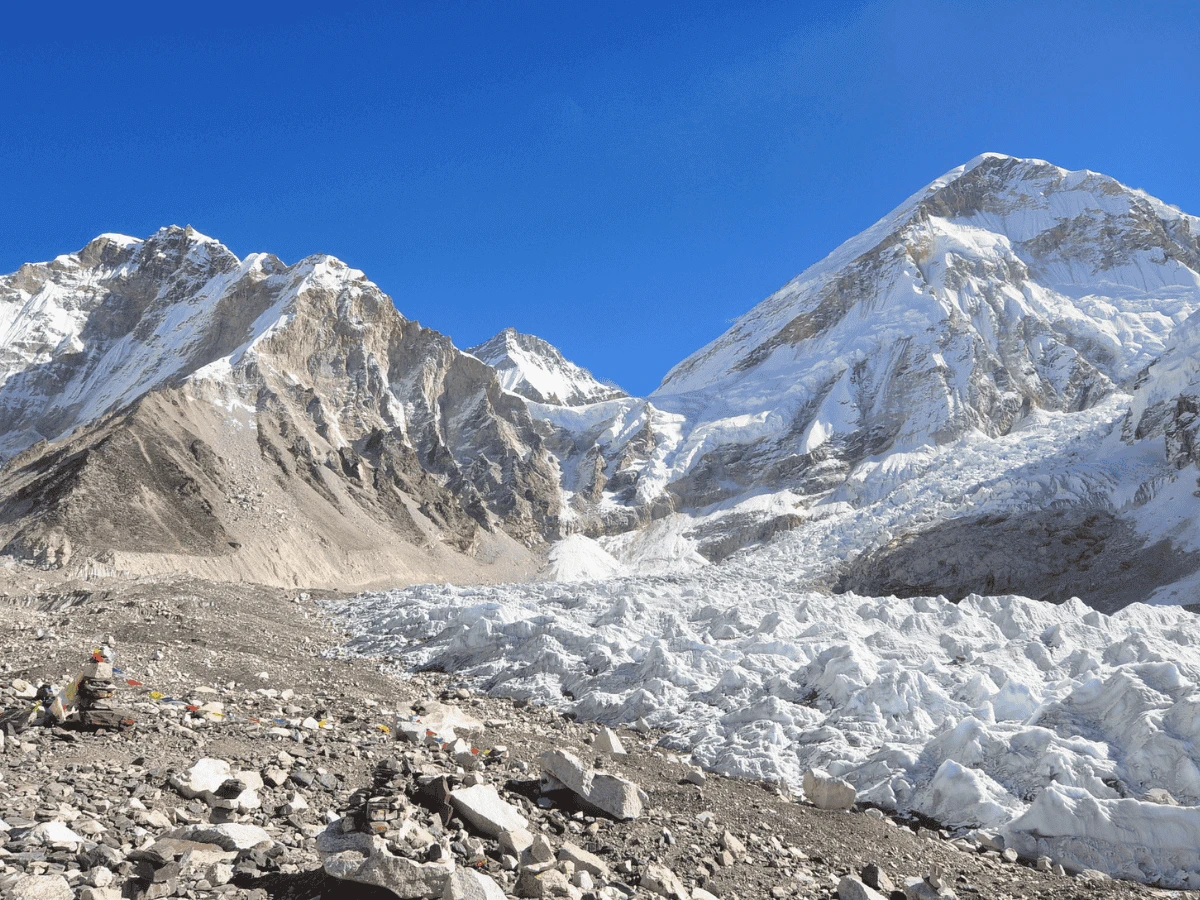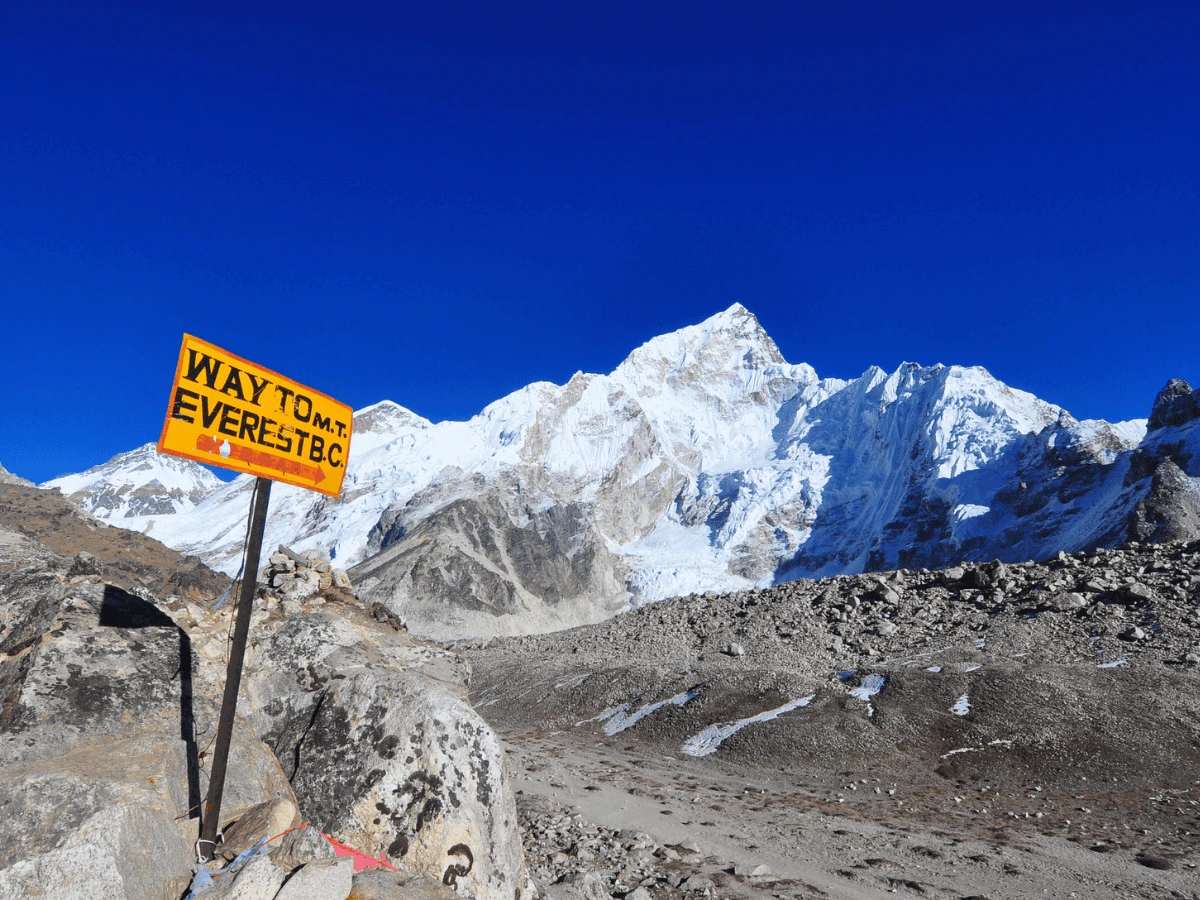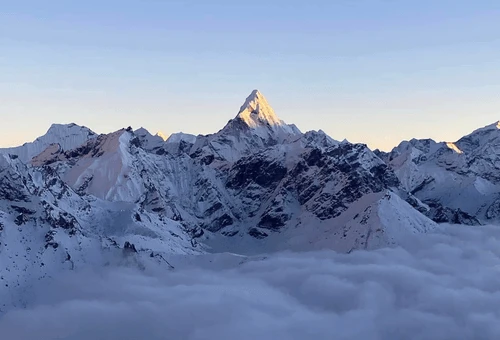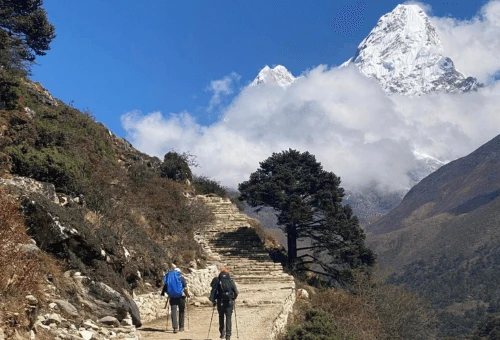The Everest Three High Passes Trek is an epic 16-day adventure through Nepal’s Khumbu in the Everest Region. Cross some of Nepal's best high passes: Kongma La (5,535m), Cho La (5,420m), and Renjo La (5,360m), which connect to the iconic Everest Base Camp Trek 14 Days (EBC) and the turquoise Gokyo Lakes.
This high-altitude trek crosses several high passes above 5000 meters, including Kala Patthar, a legendary viewpoint for a close-up view of Everest. Moreover, connect with the Sherpa culture within vibrant villages. The Everest Three High Pass Trek route covers approximately 170 kilometres, making it one of the most challenging trips in the Himalayas.
The trek takes you to some of the off-the-beaten path of the Everest, like Chukkung, Dzongla, and Gokyo Valley. Moreover, lush pine forests, high suspension bridges, and beautiful alpine valleys add to the trek's allure. Encounter Buddhist monasteries, such as the iconic Tengboche Monastery, friendly yak caravans, and tea houses serving warm meals and welcoming smiles.
Though the trek presents various challenges, the views are awe-inspiring. Witness the south face of Lhotse seen from Kongma La Pass to the frozen glacier at the top of Cho La Pass, and the stunning panoramas of Everest and Cho Oyu from Renjo La Pass.
If you want to join Adrenaline Himalayan Adventure, then this 16-Day Everest Three High Pass Trek is an ideal option for you. Along with the 3 High Passes of the Everest, discover the beauty of Khumbu and Ngozumpa Glacier. But remember, the trip demands extreme physical effort and mental resilience. Preparation is key to completing this trek within the 16-Day Everest Three High Pass Trek Itinerary.
What can you expect from Kongma La Pass, Chola Pass, & Renjo La Pass?
Let’s get into the best high pass treks in Nepal: Kongma La Pass, Chola Pass, and Renjo La Pass. No doubt, trekking over 5000 meters is an adventure of a lifetime. However, the 3 Pass Trek route consists of a rugged trail, a glacial path, steep pathways, and dense forests. Additionally, expect to walk along the fine Sherpa villages, deep valleys, moraines, and rushing rivers.
While crossing these 3 passes is itself a thrilling experience, witnessing the lifestyle of the Sherpa people and their culture is equally rewarding. Visit iconic monasteries like Tengoche Monastery and Pangboche Monastery to learn more about Buddhism. Additionally, get an insight into Himalayan wildlife while walking through the Sagarmatha National Park.
What makes the 3 high passes trek difficult?
The Everest High Passes Trek is a challenging and less-crowded trekking route in Nepal. It is more physically demanding than the standard EBC Trek Route. Trekkers will cover approximately 150–160 km, crossing three major passes that are above 5000 meters.
Typically, you will walk 6 to 8 hours a day on rugged trails with steep ascents and descents. Additionally, sections of rocky terrain, a glacier crossing at Cho La Pass, and high altitude make this trek even more challenging. That's why you must be physically fit, possess good endurance, and ideally have some prior high-altitude trekking experience.
That being said, with our proper Guidance and supportive Sherpa Guide, many trekkers have completed this trek. Our 16-Day Everest Three High Passes Trek itinerary includes rest days to help you acclimatise. The acclimatisation allows your body to adapt to the high altitude and makes it easy to complete this venture.
16-Day Everest Three High Passes Trek cost and Itinerary 2026,2027
Three High Pass Trek Distance and Duration
Day 01 | Fly from Kathmandu to Lukla (2,850m), Trek to Phakding (2,610m) |
Dat 02 | Trek from Phakding to Namche Bazaar (3,440m, 5-6 10km) |
Day 03 | Acclimatisation Day in Namche Bazaar |
Day 04 | Trek from Namche Bazaar to Tengboche (3,867m, 5-6 hours, 9km) |
Day 05 | Trek from Tengboche to Dingboche (4360m, 4-5 hours, 11km) |
Day 06 | Trek from Dingboche to Chukkung (4750m, 3-4 hours, 5km) |
Day 07 | Acclimatisation at Chukkung |
Day 08 | Trek from Chukkung to Lobuche via Kong Ma La Pass (5535m, 7-8 hours, 10km) |
Day 09 | Trek from Lobuche to Gorakshep (5170m, 7-8 hours, 15m) and Hike to EBC (5364m) |
Day 10 | Hike to Kala Patthar and Trek from Gorakshep to Dzongla (4830m, 7 hours, 7km) |
Day 11 | Trek from Dzongla to Thangnak via Chola Pass (5360m, 7 hours, 12km) |
Day 12 | Trek from Thangnak to Gokyo (4750m, 5-6 hours, 7 km) |
Day 13 | Trek from Gokyo to Marlung via Renjo La Pass (5360m, 7-8 hours, 12km) |
Day 14 | Trek from Marlung to Namche Bazaar (3440m, 6-7 hours, 15km) |
Day 15 | Trek from Namche to Lukla (2850m, 6-7 hours, 18km) |
Day 16 | Fly back to Kathmandu |
So, how much does the 16 Day Everest Three High Pass Trek cost? It depends on the service you are looking for and the budget you want to spend on the trek. Overall, the inclusive Everest Three High Pass Trek Package costs between USD 1599 to USD 2399 per person. Generally, the package includes flight fare from Kathmandu-Lukla-Kathmandu, trekking guide, meals, accommodations, permits, and other logistical arrangements.
Likewise, if you are looking for a service package that includes permits, flight fare, trekking guide, and accommodation with breakfast, then a three-high pass trek costs USD 1399 per person. However, the meals (Lunch and Dinner) are not included in this cost. Those who want to choose a guided trek but are willing to pay for the meals and accommodation by themselves can choose the service package.
Why choose Mountain Eco Trails for this Everest 3 High Pass trek?
Choosing the right trekking company can make a huge difference in your experience. Mountain Eco Trails specialises in Everest and other Nepal treks, providing a balance of safety, professionalism, and local expertise. Here are a few reasons to trek with Mountain Eco Trails:
- Experienced crew members and official team.
- Flexible and customised Langtang Trek Itinerary with personalised service.
- Complimentary Services like Duffel Bag, Trekking Poles, SIM Card, and an hour trekker's massage
- First Aid Kit with basic medication.
- Hassle-free last-minute booking and trip arrangements.
- Competitive and Fair price that matches the services and has no hidden costs.
- Special Discount for a group of trekkers of more than 5 Pax.
With Mountain Eco Trails, you trek with a trusted local company that prioritises your experience, safety, and the environment. We strive to turn your Everest journey into an incredible memory you’ll cherish for life.






